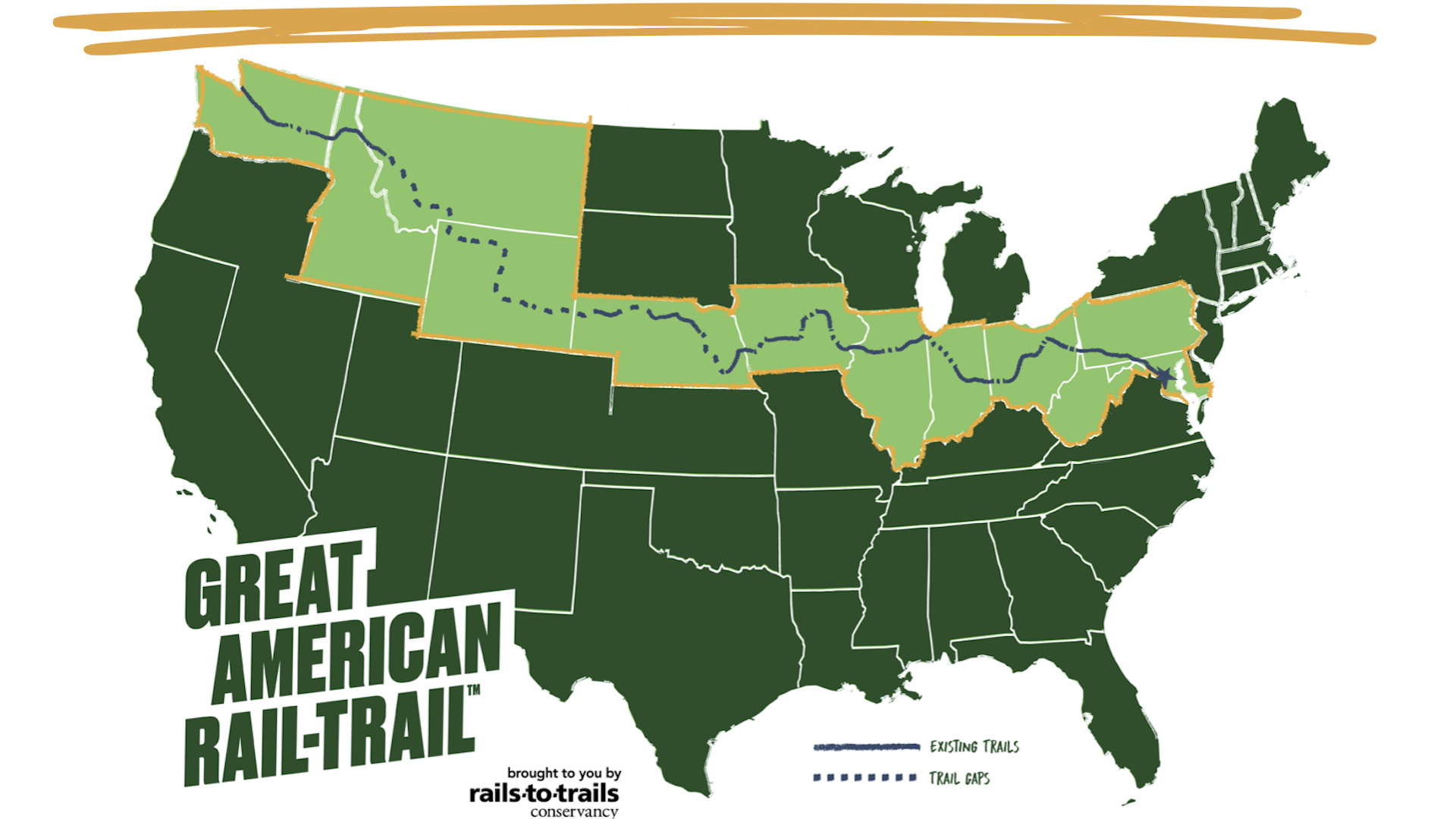

Few things are more American than massive, continent-spanning transportation infrastructure—such as our Interstate network. But while Americans can travel from coast to coast via car, train, or plane, it’s much harder to do so the way our ancient ancestors did; by the power of our own two legs. That may soon change, though, as a grassroots organization backed by over one million Americans is working to connect both coasts by way of a country-crossing bike route called the Great American Rail-Trail.
This project of the Rails-to-Trails Conservancy, which repurposes abandoned railroad lines as multi-use trails, is planned to be a more than 3,700-mile route linking Washington D.C. with the Pacific coast’s Olympic National Park.

Over 80 percent of the trail will be separate from other road traffic on completion, the Conservancy says, with its long-term goal being complete independence from existing roadways. It also touts the route’s accessibility, with some 50 million Americans living within 50 miles of the planned route.
Filling in its planned route, however, will be a time- and money-consuming endeavor. Though the project’s website boasts more than 53 percent completion, it acknowledges that preexisting greenways, multi-use paths, and rail-trails make up over 52 percent of its mileage, and independent trail development appears to be progressing at a snail’s pace. Since May 2019, the Conservancy has built only another 50 miles of trail, though another 80 are said to be under construction, and $18.4 million has been secured for further trail development.

Conservancy members are presently working to secure public funding from Washington, with the organization’s Vice President of Policy, Kevin Mills, telling Rails to Trails Magazine that federal backing is crucial to expediting the project.
“Public money is central to how you get public amenities like trails built, and there are federal, state and local roles in that,” said Mills. “At the federal level, there are the existing core programs that RTC helped create in the early 1990s and has helped to sustain, track and nurture to be ongoing sources of funding in every state in the country to build and maintain trails. These include the Transportation Alternatives Program and the Recreational Trails Program.”
A transcontinental bike trail isn’t promising for just avid mountain bikers, either, as it could be used by the growing numbers of Americans riding e-bikes. With enough chargers and campsites along the route, many Americans could treat completing their local leg as a good way to spend the weekend, or with enough time, do the whole damn thing. Sure, that’s a bit much for most people, but this is America—we dream big.
Update: Jan. 12, 10:12 a.m. ET: This article has been updated to correct the spelling of Olympic National Park, as well as remove a passage erroneously describing this as the longest bike trail in North America.
Got a tip? Send us a note: tips@thedrive.com